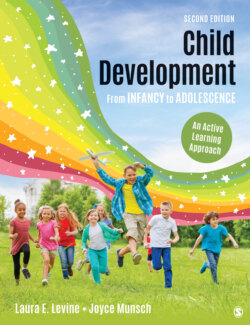Читать книгу Child Development From Infancy to Adolescence - Laura E. Levine - Страница 156
Interpreting and Using the Results of a Study
ОглавлениеAfter conducting research, we must still interpret the results. Our final understanding of what the study showed is greatly affected by the way we interpret the data, and two people may look at the same data and interpret them in different ways. In reaching conclusions, we must be careful not to generalize beyond the characteristics of the sample that participated in the research. We also need to remember that conclusions drawn from research are generalizations that apply to groups of individuals. As you learned in Chapter 1, there is a great deal of diversity among individuals within any group, so our conclusions will not apply to every single child but the fact that some children do not fit the general pattern does not invalidate the general conclusion.
Research results are tested using various statistical methods to determine whether the outcomes may have happened by chance. However, even if the results are statistically significant (that is, they did not happen by chance), you still might wonder whether they make any difference in the real world. As an example, consider research on the relationship between birth order and intelligence (Rohrer, Egloff, & Schmukle, 2015). IQ test scores of over 17,000 participants in three international studies found that the scores of firstborns in the sample were higher than the scores of second-borns at a statistically significant level of .0001 (meaning that there are only 1 chance in 10,000 that this difference is an accidental or chance finding). But before any firstborn readers of this text begin celebrating their intellectual superiority over their siblings, note that the difference in test scores between the two groups was only 1.5 points. Although these results are statistically significant, it is not likely that a difference of fewer than 2 IQ points will have any practical significance in the lives of these participants. Increasingly, researchers are also reporting effect sizes, which are a statistical measure of how large the difference is between groups that are being compared. While the significance level tells us that there is a difference, the effect size tells us how big that difference is (Sullivan & Feinn, 2012).
After researchers have confidence in the conclusions drawn from their research, they share that information with others. In Chapter 1, we described the peer review process that research articles go through before they are published in journals. A similar process precedes the presentation of research information at professional meetings. This process gives others who are knowledgeable about the topic the opportunity to critique the way the research was conducted and identify any possible flaws in the logic or problems with the methodology, analysis, or interpretation of the findings before those findings are shared with others. Researchers then make their information available to the public, government agencies, private organizations, and policymakers who can use it in ways that benefit children and families. In Chapter 1, you read about the importance of sharing findings with policymakers so they can be translated into public policy. Think of how often you see new findings from the field of child development covered as a story in the news. This helps disseminate research findings to a wider audience than just the scientific community.
